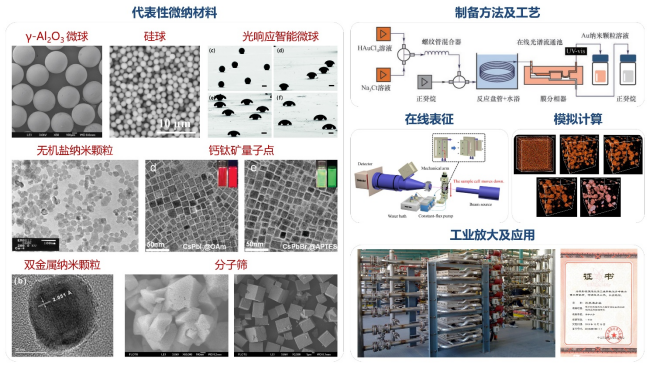Micromaterials and nanomaterials feature small size, high specific surface area and unique chemical, optical, electric and magnetic properties, which enables them to be used in broad fields. The functionalities of micro materials and nanomaterials are governed by their structure, morphology and chemical composition. Controllable preparation, in terms of structure, morphology and chemical composition, is thus plays a vital role in enabling or enhancing the functionalities of micro materials and nanomaterials. Meanwhile, developing cost-effective and highly efficient preparation routes is key to pushing up micro materials and nanomaterials into industrial applications.

Since 1990s, The State Key Laboratory of Chemical Engineering (Tsinghua University) has focused on the preparation of micromaterials and nanomaterials, including both fundamental researches and industrial applications. A series of results have been achieved over the last twenties years, and the research focuses include silica microspheres, polymer microspheres, organic-inorganic composite microspheres, smart microspheres, aerogels, microfibers, salt nanoparticles, quantum dots, metal nanoparticles, and zeolites. Some of the progresses are highlighted as follows. With attempts to better accommodate the features of different stages involved in the materials formation, novel reactors have been designed and new processes developed, leading to the controllable preparation of micro materials and nanomaterials. Advanced characterization tools in combination with simulation/computational methods have been adopted to better understand key issues behind, such as formation pathways, kinetics and coupling of diffusion and reaction. Innovations in terms of reactor engineering (e.g., design/optimization of reactor configuration, reactor scaling-up and integration) have been made, which have greatly facilitated the mass production and the industrial applications of the micro materials and nanomaterials.